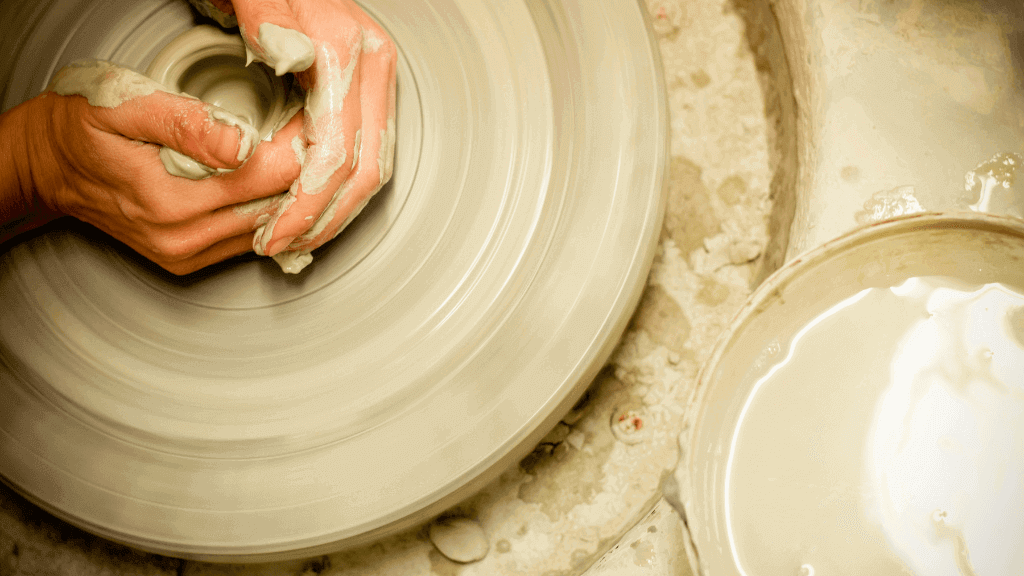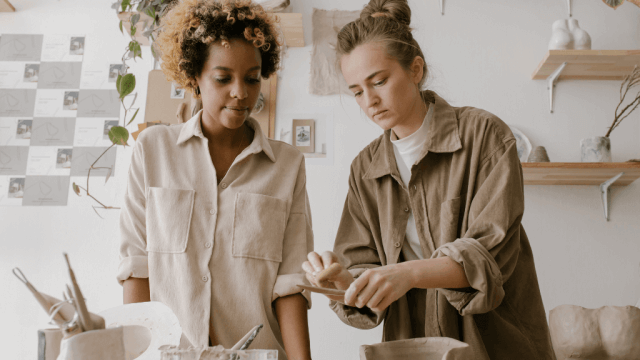Glazing the bottom of pottery is not recommended as the glaze melts into a liquid glass and hardens when cooled, potentially sticking to the kiln shelf. To avoid this, one can leave the rim unglazed and place the pot upside down in the kiln for firing. Additionally, it is essential to design pots with a foot ring of enough depth that the glaze won’t drip off and to ensure no glaze is on the bottom 1/4 inch of an object.
What techniques can be used to glaze the bottom of pottery effectively?
Several techniques can be used to glaze the bottom of pottery effectively. These include leaving the rim unglazed and placing the pot upside down in the kiln, using a wadding technique that involves temporarily adding refractory material to the bottom of the pot, or using ceramic stilts. Other methods include dipping, dripping or pouring, brushing, spraying, spattering, stippling, and wax resistance. Please look at The Crucible’s guide for more information on glazing ceramics in a traditional or DIY kiln, along with different types of glazes and their uses.
What is the purpose of glazing the bottom of pottery?
The purpose of glazing the bottom of pottery is to make it smoother and more slippery, making it less likely to break. Glazing ceramics involves mixing glazes, applying them to bisque ware, letting them dry, and then loading them into a kiln for firing. Upside-down glazing is used to glaze the bottom of pottery or plates without ruining the kiln. Ceramic glaze is a glassy coating on ceramics used for decoration and impermeability.
Can glazing the bottom of pottery affect its stability or durability?
Glazing the bottom of pottery can affect its stability and durability, as glaze chemistry is a significant factor in determining its resistance to wear and leaching. Glaze pinholes and pits can form if the ware is fired too rapidly, preventing the glaze from smoothing over. Underfiring a glaze can also prevent it from reaching maturity, while exposure to ceramic glaze chemicals during use is almost inevitable due to dust found throughout the glazing processes. Additionally, surface roughness caused by glazing can increase the adhesion of bacteria and other substances.
How can you tell if a pottery piece has been glazed on the bottom?
You can tell if a pottery piece has been glazed on the bottom by looking for wax resistance around the rim, examining the color of the clay on the bottom, and checking for glaze type and texture. Additionally, you can test for glaze by squeezing lemon juice onto the piece after it has cooled. Glazing at the bottom of pottery makes it tougher and more visually appealing.
Are there any special considerations to remember when firing pottery that has been glazed on the bottom?
When firing pottery glazed on the bottom, leaving the rim unglazed is essential, as mixing glazes by adding dry to wet for safety reasons and applying two to three coats of underglaze. Additionally, be aware of potential pinholing and pitting in the glaze. Take safety precautions such as not eating, drinking, or smoking in the area and scrubbing your hands thoroughly after glazing.











